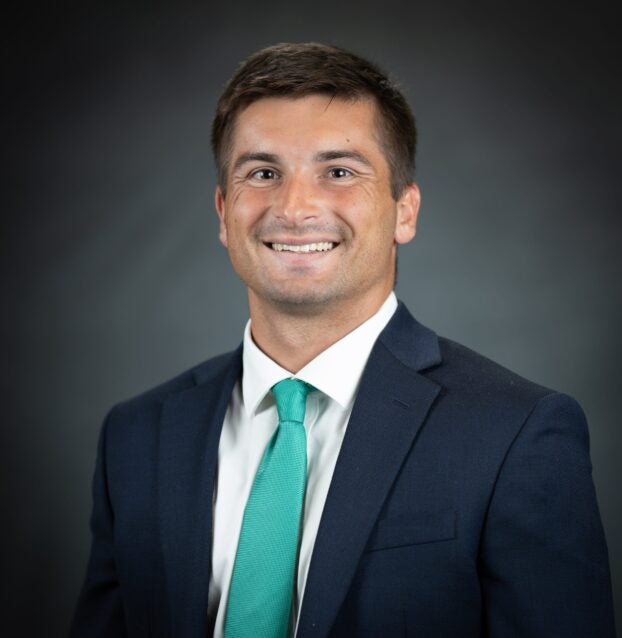Supervisors consider joining Opioid Litigation
Published 10:30 am Sunday, May 27, 2018
Attorney Chandler Rogers addressed the Lafayette County Board of Supervisors on May 21 with one simple statement.
“Most people think there’s an opioid problem – they just don’t think it’s in their community,” Rogers said
Rogers is part of a 14-firm legal team representing 22 counties and five cities in Mississippi, as well as 30 other states, in the biggest opioid litigation case in the country.
The case, which has 484 clients total, is against opioid manufacturers and distributors, in an effort to recover some of the money expended by state and local governments as a result of opioid addiction.
Recently, a Center for Disease control study named Mississippi the sixth-worst state for opioid usage, based on prescription rates.
Currently, the national average for opioid prescription rates is 80 prescriptions per 100 residents.
The prescription rate in Mississippi is 120 prescriptions per 100 residents, which translates to over one prescription per person in the last year alone.
Lafayette County’s prescription rate over the last 11 years is approximately 90 prescriptions per every 100 residents.
These statistics impact the people of Lafayette County, Rogers said, because they’re costing taxpayer dollars.
As a practicing attorney, Supervisor Kevin Frye said his experience working with clients addicted to opioids or heroin, which many opioid users transition to, inspired him to bring the matter to the supervisors’ attention. With that in mind, Frye invited Rogers to speak to the Board.
Communicare is one program in Lafayette County that provides opioid addiction treatment, and receives support from the Board of Supervisors, as well as federal and state funding.
According to Melody Madaris, director of substance abuse services at Communicare, a large number of the patients Communicare sees are suffering from opioid addiction.
“In the last month alone, we treated over 100 people through our residential, IOP, and outpatient services,” Madaris said. “An overwhelming portion of the clients we see were prescribed these medications.”
A potential settlement in the case, should the county choose to join, could go towards funding lengthier treatments and more beds, Rogers said.
Madaris said right now, and for the foreseeable future, Communicare’s 48-bed facility is filled to capacity with a long waiting list for treatment.
Oxford Treatment Center is another facility in Lafayette County that helps people recover from addictions. While OTC is strictly a for-profit company and sees mainly out-of-state clients, unlike Communicare, the effects of the opioid crisis are still apparent.
“The thing that makes opioid use disorder so significant when compared to others is the time it takes to get over the withdrawal symptoms, worsening psychological and physiological symptoms, everything that goes on in their body,” Dr. Stephen Panell, medical director for OTC said. “For instance, it may take as long as 90 days of complete treatment and supervision before they begin to feel better. For some, depending on severity, it may take six months up to a year for them to feel ‘normal’ again.”
Panell said the opioid litigation case could lead to funding longer stays in treatment, which is key for those suffering from opioid addiction and the withdrawals that come with getting clean.
At Communicare, Madaris said the usual length of residential treatment for opioid abuse disorder is 30 to 100 days. After that, clients spend 10 weeks in intensive outpatient therapy and then can come to outpatient therapy as long as they need.
Potential funding from a case settlement could mean the most severe clients are able to stay longer and focus on their recovery.
Drugs like hydrocodone, oxycodone, morphine and codeine are highly addictive, but they weren’t always marketed in an honest light, Rogers said. The fact that most people aren’t obtaining their opioids illegally is one reason Rogers said litigation like this is necessary.
While some might be quick to place blame on over-prescribing physicians, or even pass judgment on addicts, the real problem, Rogers said, has been brewing for over 40 years.
In 1970, Congress enacted the Controlled Substance Act, which attempted to set up a system of checks and balances – manufacturers would be monitored by distributors, then distributors sold to pharmacists and monitored how many pills were going into communities.
It’s a system Rogers said has “failed majorly.”
“By and large, this is a problem that relates back to the very top – to the people who make and distribute the drugs,” he said. “Over the past 10 years, the three largest distributors, McKesson, Cardinal Health and Amerisource have been making $100 billion dollars a year in revenue. Over the past 10 to 15 years, you’ve had these companies being fined by the DEA. Has it changed anything? No. Because when you have revenue of $100 billion and you’ve got to pay $100 million fines, that’s just the cost of doing business,” Rogers said.
Should the supervisors choose to be part of the case, the county will not have to pay anything up front. Instead, Rogers presented the board with a contingency fee contract, in which 25 percent of a potential settlement will go to Rogers and his team.
Ideally, he said, the remaining settlement will be in the form of an abatement fund. Rogers said the fund is basically a remedy to the problem paid for by the manufacturers and distributors named in the case. Those funds could then potentially be used to fund training and education materials for those dealing with opioid addiction and recovery.
The supervisors have not yet voted to join in the opioid litigation, and Frye said there’s still more he’s trying to understand about possible benefits of being involved.
One thing Frye is sure of, however, is that the opioid crisis is a serious issue in the LOU community.
“This is the next tobacco,” Frye said. “I think for us not to participate would be a mistake. I hope we would sit down and make a decision within the next six weeks, but I’m still trying to learn more.”





